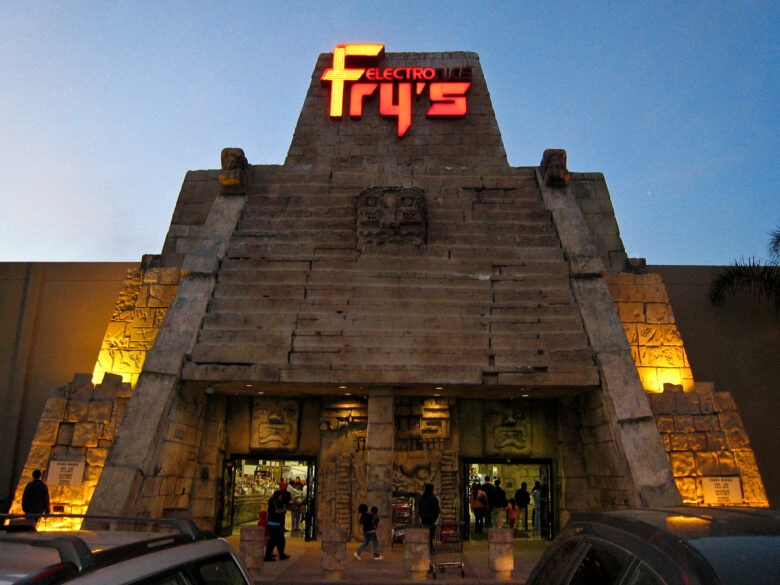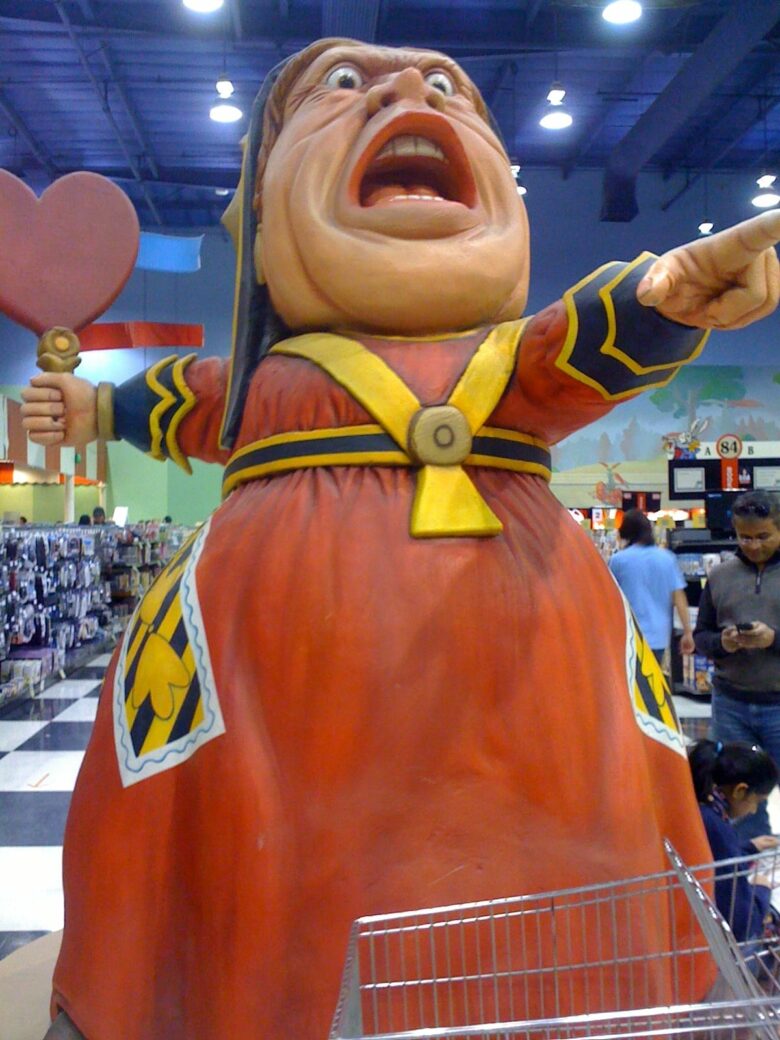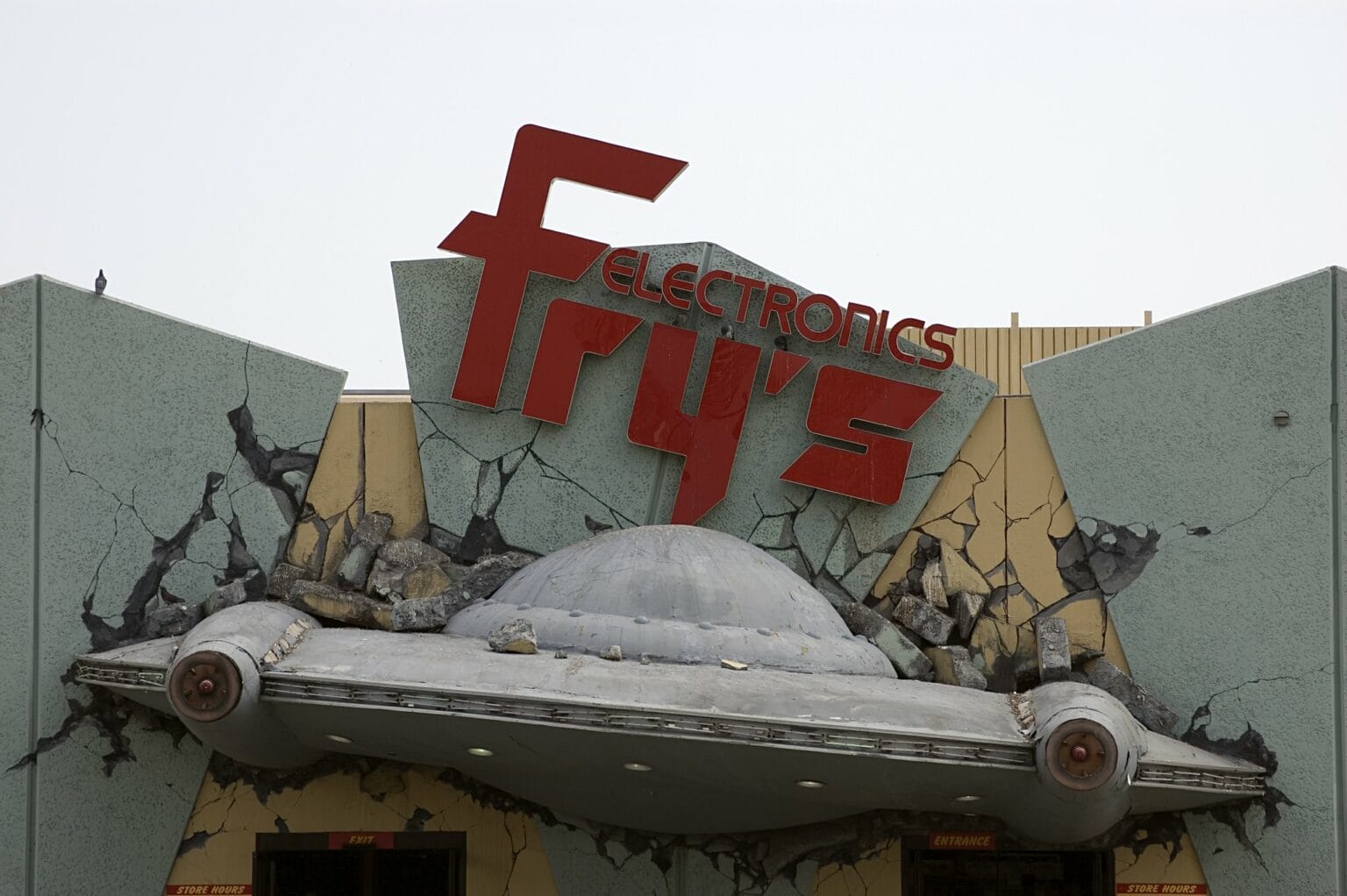Fry’s Electronics, a brick-and-mortar retailer and Silicon Valley institution since the mid-1980s, has shut its doors. And, while it might be hyperbolic to say Apple killed the quirky electronics superstore, Cupertino certainly hammered a nail or three in Fry’s coffin.
The chain — which stocked a sprawling selection of TVs, stereos and other electronics alongside computer components, DVDs, groceries and less-savory items — became a go-to for geeks as personal computers took off.
But even with crazy themed stores that made it the “Walt Disney World of electronics stores,” Fry’s couldn’t compete in the sleek new retail world Apple created.
Birth of Fry’s Electronics
Tuesday’s news of the closure may not have come as a surprise to anyone who saw the empty shelves in a Fry’s over the past couple of years. Nevertheless, it marks the end of an era for a once-major retailer.
The first Fry’s Electronics superstore opened in Silicon Valley in 1985, the year after the first Macintosh shipped. For the next couple of decades, the chain boomed. By 2019, Fry’s operated 34 stores in nine states.
The Fry’s model was simple: Cram a giant warehouse with everything a nerd could dream of, and decorate it with an outlandish theme like a ’50s-style alien invasion, the Mayan empire or the history of Silicon Valley. The company bought items in bulk and sold them at discounts that made it hard for others to compete.
Like supermarkets, Fry’s used the high foot traffic in its stores to sell shelf space to vendors at a premium. A 1997 Forbes article estimated Fry’s per-store annual gross at $85 million. That, it said, was “among the highest in the industry.” (By comparison, Best Buy managed $28 million per store at the time.)
By 2021, Fry’s Electronics had become an underdog struggling against much larger, more dominant retail channels. But 30 years ago, it was the Amazon of its day, running roughshod over the competition.
A Bloomberg Business article from May 1991, titled “Whatever Happened To The Corner Computer Store?,” outlined how small, mom-and-pop-style vendors that sold computers a decade earlier were now being squeezed by new giants like Fry’s. “The latest trend is computer superstores — cavernous, no-frills outlets with floor-to-ceiling stacks of discounted gear,” wrote Lois Therrien.
Not enough expert knowledge

Photo: Bryce Edwards
That, in a nutshell, was a great description of Fry’s Electronics. The retailer became a one-stop shop for consumers that could offer far lower prices than rivals. The Fry’s model didn’t call for sophistication. In fact, the chain paid little attention to attracting experts to work in its stores. Instead, Fry’s typically hired “neophytes for about $6 an hour” (as the 1997 Forbes article put it). Staff turnover was high.
Note this section from the 2012 book Branded Customer Service: The New Competitive Edge about buying an Apple product from a Fry’s Electronics store:
“Some of Apple’s channel distributors do not have adequate product knowledge to sell the Mac. For example, Fry’s Electronics, the gigantic American high-tech retailer, carries a full range of Apple products.
Its salespeople, however, do not express the same enthusiastic attitude about the equipment that you experience when you shop at an Apple Store. [One of the book’s co-authors] was recently referred to Fry’s resident ‘Apple guru.’ This guru’s qualification was that he once owned an old model Mac.”
Struggling to survive in the modern age
It wasn’t just buying products where the Fry’s experience was suboptimal, either. The Forbes article again:
“Employees at the [Fry’s] return desk are given bonuses based on the number of customers they talk into taking store credit instead of cash. Getting a refund check can take weeks. Internally this policy is referred to as ‘the double H’ for ‘hoops and hurdles’ … The point is to wear customers down until they give up.”
This kind of cutthroat business practice was always going to struggle in the internet age. But Apple’s stores have shown the world what successful computer retailing looks like nowadays. Perhaps unsurprisingly, Apple’s model embraces the human factor.
Apple stores turned shopping for technology into an experience far more like buying a bit of luxury fashion: small stores, nice locations, knowledgeable salespeople, positive interactions. You can dismiss Apple’s “town square” idea for its stores as a marketing gimmick. (After all, an Apple store is still a store!) But Cupertino’s clean, impeccably furnished retail establishments reshaped expectations for in-person electronics shopping.
There’s a reason the formula has been followed (albeit not always successfully) by so many other players. Today, Apple ranks among the most profitable retailers in the world on a dollars-per-square-foot basis.
Apple stores and the end of an era

Photo: Bryce Edwards/Flickr CC
According to a message on the Fry’s website, the company officially ceased operations Wednesday.
“After nearly 36 years in business as the one-stop-shop and online resource for high-tech professionals across nine states and 31 stores, Fry’s Electronics, Inc. (“Fry’s” or “Company”), has made the difficult decision to shut down its operations and close its business permanently as a result of changes in the retail industry and the challenges posed by the Covid-19 pandemic,” the website said. “The Company will implement the shut down through an orderly wind down process that it believes will be in the best interests of the Company, its creditors, and other stakeholders.”
For fans of tech history, it’s always sad to see another electronics superstore go to the big warehouse in the sky. Names like ComputerLand, CompUSA and Fry’s Electronics feel like an artifact from another era. They belong to the same world as the Commodore, Osborne and Tandy computers that, at one time, lined their shelves. It also sucks to see anyone losing a job during a pandemic.
However, on balance, the age of the giant warehouse computer stores — stocked with aisle after cluttered aisle of indiscriminately selected accessories — probably marked the worst era of tech retail that ever existed. From a customer perspective, things are a whole lot better now. Even if it means the end of an era.
Where did you buy your first personal computer? Do you have fond memories of retail giants like Fry’s Electronics? Let us know in the comments below.


